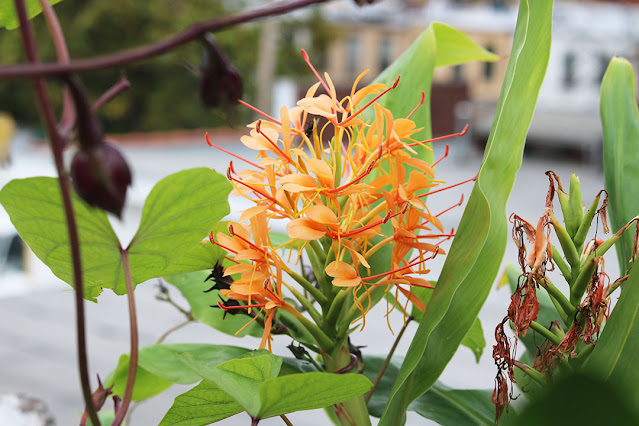Late fireworks on the terrace. This beautiful flowering ginger-cousin is a species of Hedychium, and was a very kind and unexpected gift earlier this year from a garden design client, who knew how excited I was to hear that his ginger relative had actually bloomed.
When the giant plant was delivered to our door in early September, beautifully wrapped in burlap, I hefted it up and out to the terrace and then did some reading.
Don't judge a plant by its spectacular cover. Hedychiums, native to Asia, are known collectively as flowering gingers. They are apparently popular in the nursery trade. (I had no idea.) Bought and planted by loving plant owners the gingers have escaped, and this has led their becoming some of the most invasive plants on the planet. In mild parts of the world where they are not native they take over. Even in Cape Town I have seen a similar ginger clogging a stream near my mother's house. In Hawaii Kahili ginger - as this species (H. gardenerianum) is known, there - has a price on its head. In Florida it is running rampant.
In New York's cold winter climate it doesn't stand much chance of becoming a thug, of course. If left out doors it would succumb. But in Hawaii my friend Sunny Savage is devising ways of dealing with the habitat-altering invasive creatively: by eating it. (You can download her Savage Kitchen app to learn more.)
We will talk more about native and invasive edible plants this Saturday, October 31st, at the New York Botanical Garden; and there are now some tickets available! Click on the date links to book. My second fall class was shifted from Thursday because of predicted torrential rain, and not every student could make the rain date. (Apologies if you are one of them.)
__________






















